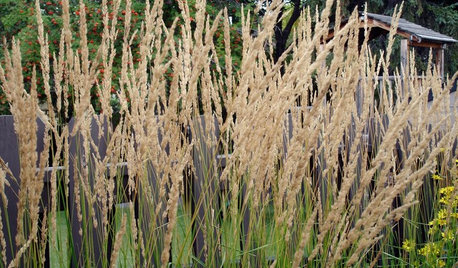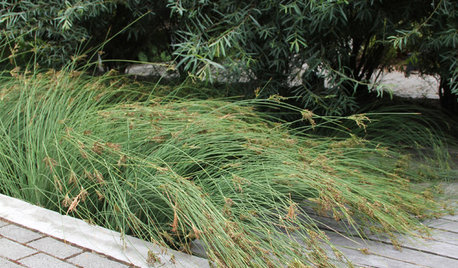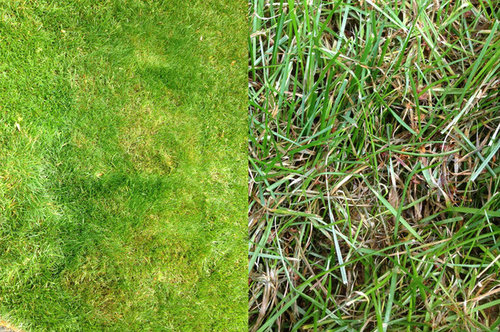New Fescue turning brown and slimey
viche
10 years ago
Related Stories

GARDENING GUIDESNew Ways to Think About All That Mulch in the Garden
Before you go making a mountain out of a mulch hill, learn the facts about what your plants and soil really want
Full Story
GARDENING AND LANDSCAPING5 Hot Cool-Season Grasses
Chill out this spring with resilient grasses that will kick-start your garden and may just last all year
Full Story0

SAVING WATERHouzz Call: Are You Letting Go of Your Lawn?
Many facing a drought are swapping turf for less thirsty plantings. If you’re one of them, we’d like to hear about it
Full Story
PETS5 Finishes Pets and Kids Can’t Destroy — and 5 to Avoid
Save your sanity and your decorating budget by choosing materials and surfaces that can stand up to abuse
Full Story
GRASSES10 Ways to Use Ornamental Grasses in the Landscape
These low-maintenance plants can add beauty, texture and privacy to any size garden
Full Story
EDIBLE GARDENSHow to Grow Your Own Sweet Summer Crops
This guide will help any gardener get started on growing the freshest warm-season veggies and berries for summer
Full Story
GARDENING GUIDESProtect a Precious Resource With a Rain Garden
Promote pure water and a beautiful landscape with a garden design that makes the most of the rain
Full Story
MOST POPULARMeet a Lawn Alternative That Works Wonders
Carex can replace turfgrass in any spot, is low maintenance and adjusts easily. Add its good looks and you’ve got a ground cover winner
Full Story
SAVING WATERXeriscape Gardens: How to Get a Beautiful Landscape With Less Water
Conserve water and make gardening much easier with the xeriscape approach’s 7 principles
Full Story
GARDENING GUIDESHow to Plant a New Lawn From Sod
Take the quick-start route to turf with sod; these installation guidelines will help ensure a healthy and long-lasting lawn
Full Story






tiemco
auteck
Related Professionals
Londonderry Landscape Architects & Landscape Designers · Benbrook Landscape Architects & Landscape Designers · Prairie Ridge Landscape Architects & Landscape Designers · Winder Landscape Architects & Landscape Designers · Springfield Landscape Contractors · Peabody Landscape Contractors · Aberdeen Landscape Contractors · Dudley Landscape Contractors · Golden Landscape Contractors · Maywood Landscape Contractors · Nashua Landscape Contractors · South Hackensack Landscape Contractors · Weymouth Landscape Contractors · Drexel Hill Swimming Pool Builders · Lincoln Swimming Pool BuildersvicheOriginal Author
dchall_san_antonio
tiemco
vicheOriginal Author
maynardgkeynes